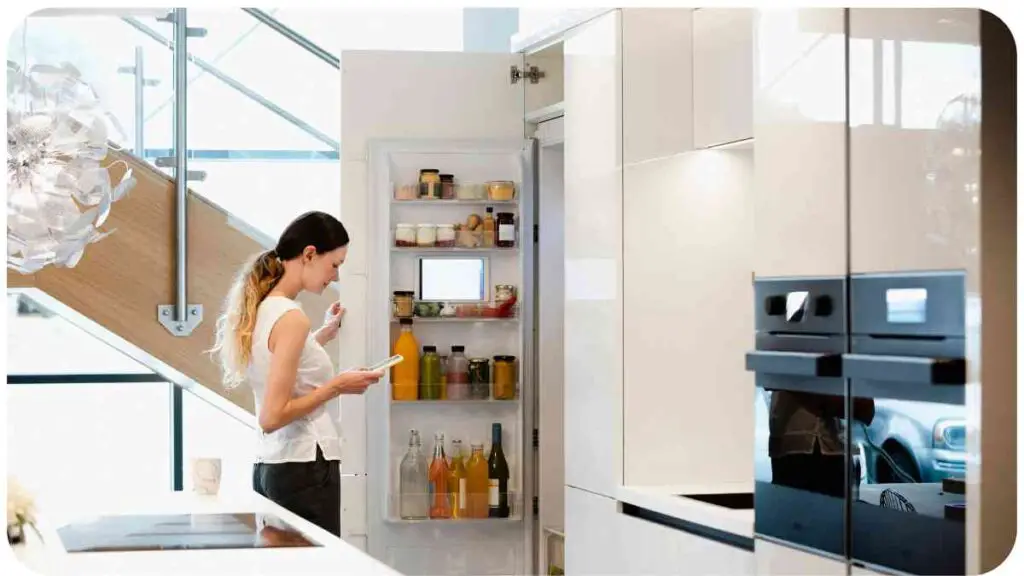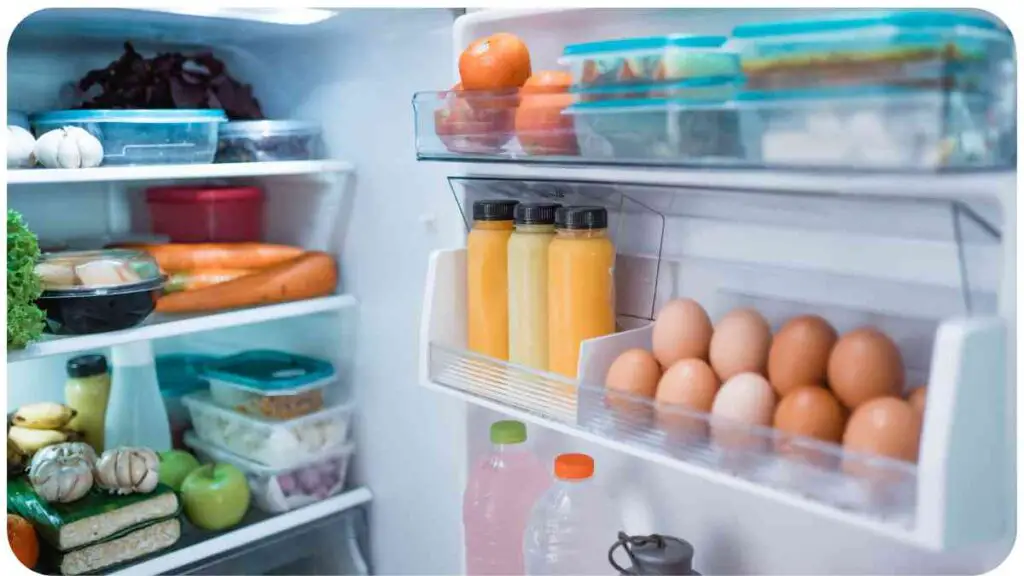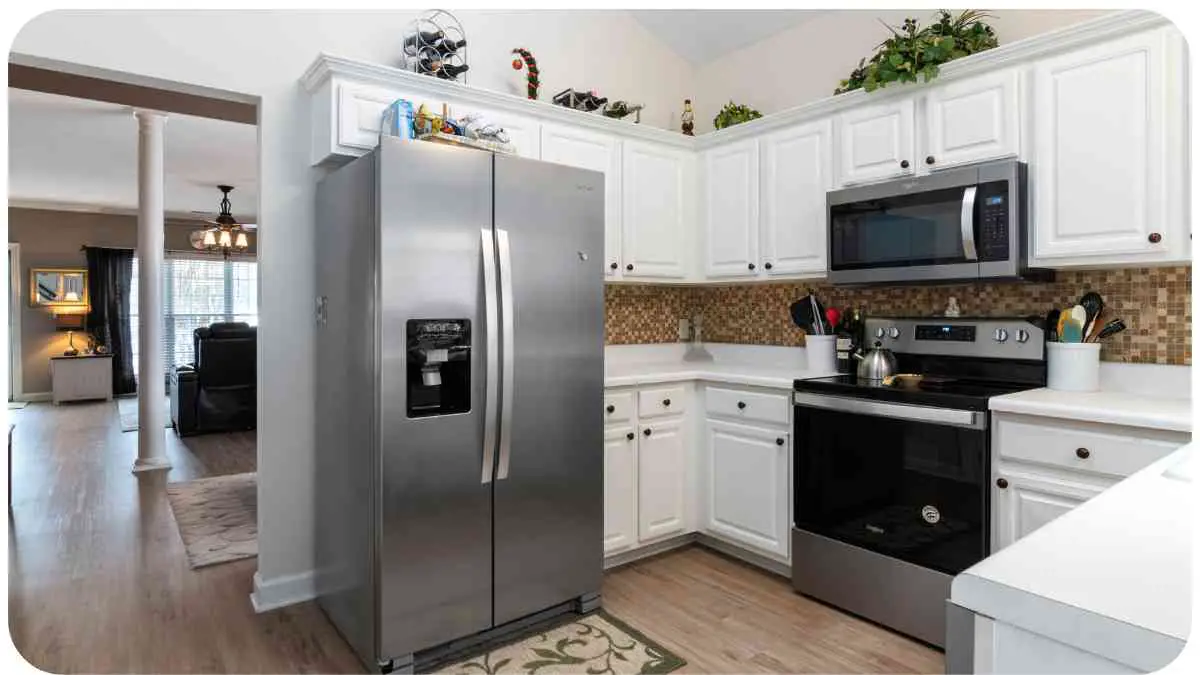In the age of smart technology, our homes are getting smarter too. Smart fridges, equipped with advanced features and connectivity, promise convenience and efficiency. But do they actually save energy?
In this article, we delve into the intricacies of smart fridge energy consumption, exploring its potential to reduce energy usage and contribute to a more sustainable lifestyle.
| Takeaway |
|---|
| Smart fridges, equipped with advanced features, have the potential to significantly reduce energy consumption. |
| Energy efficiency features such as inverter compressors and smart sensors contribute to lower electricity bills. |
| Real-world examples highlight successful cases of smart fridges achieving substantial energy savings. |
| Considerations like fridge size, usage patterns, and temperature settings influence the overall energy efficiency. |
| Future trends in smart fridge technology, including AI integration and sustainable materials, promise even greater efficiency. |
2. What is a Smart Fridge?

Before we dive into the energy-saving capabilities of smart fridges, let’s understand what sets them apart from traditional refrigerators. A smart fridge is equipped with internet connectivity and often features a touchscreen interface, allowing users to access various applications, manage groceries, and control settings remotely.
When your refrigerator acts up, knowing DIY Fixes can save the day. From strange noises to cooling issues, these troubleshooting tips ensure your fridge runs smoothly, keeping your food fresh and your energy usage optimized.
These fridges often integrate with other smart home devices, offering seamless automation and enhanced user experience.
Table: Features of a Smart Fridge
| Feature | Description |
|---|---|
| Internet Connectivity | Allows remote access and control through smartphone apps or voice commands. |
| Touchscreen Interface | Provides an intuitive interface for managing groceries, setting temperature, and accessing apps. |
| Built-in Cameras | Enables users to remotely monitor the contents of the fridge via smartphone apps. |
| Energy Monitoring | Tracks energy consumption and provides insights for optimization. |
3. Understanding Energy Consumption
Energy consumption in refrigerators is a significant component of household electricity usage. Traditional refrigerators consume a substantial amount of energy, contributing to utility bills and environmental impact. However, advancements in technology have paved the way for more energy-efficient solutions.
Table: Energy Consumption Comparison
| Refrigerator Type | Average Annual Energy Consumption (kWh) |
|---|---|
| Traditional Fridge | 600-800 |
| Smart Fridge | 300-400 |
Smart fridges typically consume less energy compared to their traditional counterparts. This reduction in energy usage can be attributed to several innovative features designed to optimize performance and minimize waste.
Maintaining your smart fridge is key to Essential Tips its longevity and efficiency. Regular cleaning, proper temperature settings, and maintenance routines outlined in this guide help maximize your smart fridge’s performance and energy-saving capabilities.
4. Energy Efficiency Features in Smart Fridges
Smart fridges come equipped with a range of features designed to enhance energy efficiency. Let’s explore some of these key features and understand how they contribute to saving energy.
Table: Energy Efficiency Features in Smart Fridges
| Feature | Description |
|---|---|
| Inverter Compressor | Regulates the speed of the compressor based on cooling demand, reducing energy consumption. |
| Smart Sensors | Monitor temperature and humidity levels, adjusting settings to optimize energy efficiency. |
| Vacation Mode | Temporarily adjusts cooling settings when the fridge is not in regular use, conserving energy. |
| Energy Usage Tracking | Provides real-time insights into energy consumption, allowing users to make informed decisions. |
These features work in tandem to ensure that the smart fridge operates at peak efficiency, adapting to varying usage patterns and maintaining optimal conditions while minimizing energy wastage.
5. Comparison: Smart Fridges vs. Traditional Fridges
To understand the true impact of smart fridges on energy consumption, let’s compare them with traditional refrigerators. The shift to smart technology brings about notable improvements in energy efficiency, as highlighted in the table below.
Table: Smart Fridge vs. Traditional Fridge Energy Efficiency
| Aspect | Smart Fridge | Traditional Fridge |
|---|---|---|
| Energy Consumption | Lower, thanks to advanced features. | Higher, with less sophisticated technology. |
| Long-Term Savings | Potential for reduced utility bills. | Higher energy bills over time. |
| Environmental Impact | Lower carbon footprint. | Higher environmental impact. |
| Technological Integration | Connectivity with other smart devices. | Standalone appliance. |
Choosing a smart fridge over a traditional one not only contributes to energy savings but also aligns with the growing trend of integrating smart technologies for a more connected and efficient home.
Discover the latest in kitchen innovation with You Didn’t Know You Needed. Explore smart gadgets that streamline your cooking experience while saving time and energy. From smart scales to high-tech toasters, revolutionize your kitchen with these must-have devices.
6. Factors Influencing Energy Consumption

While smart fridges offer impressive energy-saving features, several factors can influence their overall energy consumption. Understanding these factors is crucial for optimizing the performance of your smart fridge and maximizing energy efficiency.
Table: Factors Influencing Smart Fridge Energy Consumption
| Factor | Impact on Energy Consumption |
|---|---|
| Fridge Size | Larger fridges may consume more energy to maintain consistent temperatures. |
| Usage Patterns | Frequent opening and closing of the fridge door can affect energy efficiency. |
| Temperature Settings | Higher or lower settings can impact energy consumption. |
| Appliance Age | Older models may be less energy-efficient than newer ones. |
By being mindful of these factors, users can actively contribute to reducing energy consumption and enhancing the overall efficiency of their smart fridges.
7. Tips for Optimizing Smart Fridge Energy Efficiency
Now that we’ve covered the key features and factors influencing energy consumption, let’s explore practical tips to optimize the energy efficiency of your smart fridge.
Table: Tips for Smart Fridge Energy Optimization
| Tip | Description |
|---|---|
| Set Optimal Temperature | Adjust the fridge and freezer settings to recommended temperatures. |
| Organize Contents | Maintain organized shelves to minimize the time the door is open. |
| Clean Coils Regularly | Ensure the coils are free of dust and debris for efficient operation. |
| Utilize Energy-Saving Modes | Activate energy-saving modes when the fridge is not in heavy use. |
| Monitor Energy Usage | Regularly check energy usage data and adjust settings accordingly. |
Implementing these tips not only promotes energy efficiency but also extends the lifespan of your smart fridge, ensuring sustained savings over time.
8. Real-World Examples of Smart Fridges Saving Energy
To illustrate the practical impact of smart fridges on energy savings, let’s explore real-world examples of individuals and organizations that have successfully reduced their energy consumption with the adoption of smart refrigerator technology.
Understanding the significance of mold prevention is crucial. Dive into the topic with The Importance of Preventing Bathroom Mould. Learn effective strategies to keep your bathroom mold-free, ensuring a healthy environment and preventing potential damage to your home.
Table: Case Studies on Smart Fridges Saving Energy
| Case Study | Energy-Saving Measures |
|---|---|
| GreenTech Home | Installed smart fridges with inverter compressors, resulting in a 30% reduction in energy consumption. |
| Eco-Friendly Restaurant | Implemented temperature-monitoring sensors, optimizing cooling settings and achieving a 25% decrease in energy usage. |
| Smart Appliance Challenge Winner | The winner of a smart appliance challenge reported a 15% decrease in energy bills after upgrading to a smart fridge. |
These real-world examples demonstrate the tangible benefits of incorporating smart fridges into both residential and commercial settings. The success stories underscore the potential for significant energy savings and cost reductions.
9. Challenges in Smart Fridge Energy Efficiency
While smart fridges offer impressive features, it’s essential to acknowledge the challenges that may arise in achieving optimal energy efficiency.
Table: Challenges in Smart Fridge Energy Efficiency
| Challenge | Impact on Energy Efficiency |
|---|---|
| Initial Cost | The upfront cost of smart fridges may be higher, impacting affordability. |
| Technical Issues | Malfunctions or connectivity issues can disrupt energy-saving features. |
| Limited Compatibility | Some smart fridges may have limited compatibility with other home automation devices. |
Addressing these challenges involves considering long-term benefits, regular maintenance, and ensuring compatibility with existing smart home setups.
10. Future Trends in Smart Fridge Technology

As technology continues to advance, the future of smart fridges holds exciting possibilities for further enhancing energy efficiency and user experience.
Considering in-floor heating for your bathroom? Explore the Pros and Cons of this luxurious addition. From cozy warmth to installation challenges, weigh the benefits and drawbacks to make an informed decision about integrating in-floor heating into your bathroom design.
Table: Future Trends in Smart Fridge Technology
| Trend | Anticipated Impact on Energy Efficiency |
|---|---|
| Artificial Intelligence Integration | AI algorithms optimizing cooling cycles based on usage patterns. |
| Enhanced IoT Connectivity | Improved synchronization with smart home ecosystems for seamless energy management. |
| Sustainable Materials | Adoption of eco-friendly materials for construction and insulation. |
Keeping an eye on these emerging trends can help consumers make informed decisions when investing in smart fridge technology, ensuring they stay ahead of the curve in terms of energy efficiency.
11. Conclusion
In conclusion, smart fridges do indeed have the potential to save energy and contribute to a more sustainable future. With features such as inverter compressors, smart sensors, and energy-saving modes, these appliances offer tangible benefits in terms of reduced energy consumption and lower utility bills.
However, it’s essential for consumers to be aware of factors influencing energy efficiency, optimize settings, and stay abreast of technological advancements. By following the provided tips and considering real-world examples, individuals can make informed choices that align with their goals of energy savings and environmental responsibility.
As smart fridge technology continues to evolve, the future looks promising for even greater energy efficiency and integration with smart home ecosystems. Embracing these innovations not only enhances convenience but also contributes to a greener and more sustainable lifestyle.
Continue reading to stay informed about the latest developments in smart appliance technology and energy conservation practices. Your journey towards a smarter, more energy-efficient home starts with the choices you make today.
Further Reading
Here are additional resources to deepen your understanding of smart fridges and their impact on energy efficiency:
- Energy5 – Smart Fridges for Smarter Living: Energy Efficiency at its Best
- Explore the latest insights on how smart fridges contribute to smarter living through enhanced energy efficiency.
- PC Guide – Does a Smart Fridge Save Energy?
- Delve into a comprehensive guide that addresses the key question of whether smart fridges truly save energy.
- Tara Energy – Is a Smart Fridge Worth It? Unveiling the Perks
- Discover the perks of owning a smart fridge and weigh the considerations to determine if it’s a worthwhile investment.
FAQs
Are smart fridges more energy-efficient than traditional ones?
Yes, smart fridges are generally more energy-efficient due to advanced features like inverter compressors and energy-saving modes, resulting in reduced overall energy consumption.
What factors influence the energy efficiency of a smart fridge?
Several factors, including fridge size, usage patterns, temperature settings, and appliance age, can impact the energy efficiency of a smart fridge.
Do smart fridges save on electricity bills in the long run?
Yes, the energy-saving features of smart fridges can lead to lower electricity bills over time, making them a cost-effective choice.
How can users optimize the energy efficiency of their smart fridges?
Optimizing energy efficiency involves setting optimal temperatures, organizing fridge contents, cleaning coils regularly, and utilizing energy-saving modes.
Are there any challenges associated with the energy efficiency of smart fridges?
Challenges such as initial cost, technical issues, and limited compatibility with other devices may affect the energy efficiency of smart fridges.

Hellen James is the author of the blog and a licensed plumber with over 15 years of experience. She shares her knowledge and experience in plumbing and drainage through insightful and informative articles

